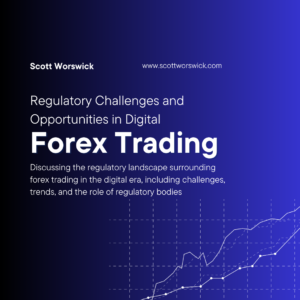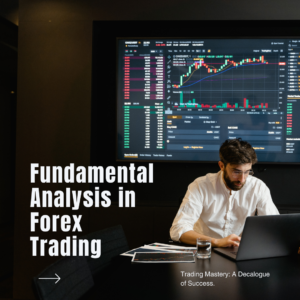In the fast-paced realm of financial markets, Forex trading emerges as a dynamic avenue for investors to engage in the buying and selling of currencies. At the heart of this trading landscape lies a fundamental element that both distinguishes and defines it: leverage. Leverage empowers traders to amplify their market exposure, enabling them to control larger positions with only a fraction of the capital required. Understanding the pivotal role that leverage plays in Forex trading is essential for navigating the complexities of the market, as it brings forth a multitude of benefits and risks that can significantly impact trading outcomes.
Leverage serves as a powerful tool for traders in the Forex market, offering the potential to magnify profits and capitalize on price movements with limited capital outlay. By leveraging their positions, traders can control larger sums of currency than their initial investment would allow, thereby maximizing profit potential. This ability to amplify gains is particularly attractive in a market characterized by high liquidity and volatility, where even small fluctuations can translate into substantial profits. However, while leverage opens the door to significant opportunities, it also exposes traders to heightened levels of risk, necessitating a thorough understanding of its mechanics and implications.
Despite its potential rewards, leverage in Forex trading carries inherent risks that demand careful consideration and risk management. The magnification effect of leverage not only amplifies potential profits but also accentuates potential losses. Even a slight adverse movement in the market can result in significant drawdowns, potentially wiping out a trader’s capital if proper risk management measures are not in place. Moreover, leverage magnifies the impact of market volatility, increasing the likelihood of rapid and substantial price fluctuations that can catch traders off guard. As such, a comprehensive understanding of leverage’s benefits and risks is paramount for traders looking to navigate the intricacies of Forex trading successfully.
Table of Contents
1. Understanding Leverage
Leverage stands as a cornerstone concept within the realm of Forex trading, offering traders the opportunity to control positions far beyond their initial capital investment. At its core, leverage involves borrowing funds to amplify the size of a trader’s position in the market. Through leverage, traders can enter into transactions with a nominal investment, yet wield significant purchasing power. For instance, with a leverage ratio of 100:1, traders can control a position worth $100,000 with a mere $1,000 of capital. This magnification effect is what allows Forex traders to capitalize on small price movements and potentially generate substantial profits.
In the context of Forex trading, leverage serves as a double-edged sword, presenting both opportunities and risks. On one hand, leverage empowers traders to maximize their profit potential by allowing them to control larger positions than would otherwise be feasible with their available capital. This ability to amplify gains is particularly advantageous in a market characterized by high liquidity and frequent price fluctuations. Traders can capitalize on even minor movements in currency exchange rates to generate significant returns on their investments. However, it is essential to recognize that the same leverage that magnifies profits also amplifies losses, underscoring the importance of prudent risk management strategies.
While leverage enables traders to magnify their market exposure, it also introduces a heightened level of risk into Forex trading. The magnification effect of leverage means that even small adverse price movements can result in significant losses, potentially exceeding the trader’s initial investment. Moreover, leverage amplifies the impact of market volatility, increasing the likelihood of sudden and substantial price fluctuations. Traders must exercise caution and implement robust risk management measures to mitigate these risks effectively. This may include setting strict stop-loss orders, diversifying their trading strategies, and adhering to disciplined trading practices.
In simple words, leverage plays a pivotal role in Forex trading, offering traders the potential to amplify their profits while simultaneously exposing them to increased levels of risk. Understanding the mechanics of leverage is crucial for traders seeking to navigate the complexities of the Forex market successfully. By harnessing the power of leverage judiciously and implementing effective risk management strategies, traders can capitalize on market opportunities while safeguarding their capital against potential losses.
2. Benefits of Leverage in Forex Trading
Leverage serves as a potent tool in the arsenal of Forex traders, offering a multitude of benefits that enhance their ability to capitalize on market opportunities. One of the primary advantages of leverage in Forex trading is its ability to amplify potential profits. By allowing traders to control larger positions with a fraction of the capital required, leverage enables them to magnify gains when the market moves in their favor. Even minor fluctuations in currency exchange rates can translate into substantial returns, providing traders with the opportunity to generate significant profits from relatively small price movements.
Furthermore, leverage empowers traders to diversify their trading strategies and participate in a broader range of market opportunities. With the ability to control larger positions, traders can spread their investments across multiple currency pairs, thereby reducing their exposure to individual market risks. This diversification not only enhances portfolio resilience but also enables traders to capitalize on diverse market conditions. Whether trading major currency pairs, exotic currencies, or currency crosses, leverage facilitates access to a wide array of trading opportunities in the Forex market, allowing traders to tailor their strategies to prevailing market dynamics.
In addition to amplifying profit potential and enabling diversification, leverage in Forex trading offers traders enhanced flexibility and efficiency. With leverage, traders can achieve greater exposure to the market with less capital outlay, freeing up resources for other investment opportunities or risk management purposes. This efficiency is particularly advantageous for traders seeking to maximize their returns while adhering to stringent capital constraints. Moreover, leverage enables traders to execute larger positions with lower transaction costs, as the capital required to enter into trades is significantly reduced, resulting in lower margin requirements and financing costs.
In conclusion, the benefits of leverage in Forex trading are manifold, offering traders the opportunity to amplify profits, diversify their trading strategies, and enhance flexibility and efficiency. By leveraging their capital effectively, traders can harness the power of the Forex market to capitalize on price movements and generate significant returns on their investments. However, it is essential for traders to exercise caution and implement robust risk management strategies to mitigate the inherent risks associated with leverage effectively. With a thorough understanding of its benefits and risks, traders can navigate the complexities of the Forex market with confidence and skill.
3. Risks Associated with Leverage
While leverage can significantly enhance profit potential in Forex trading, it also exposes traders to a myriad of risks that demand careful consideration and risk management. One of the primary risks associated with leverage in Forex trading is the potential for substantial losses. The magnification effect of leverage means that even small adverse price movements can result in significant drawdowns, potentially exceeding the trader’s initial investment. This heightened risk of loss underscores the importance of implementing robust risk management strategies to protect capital and preserve trading accounts against adverse market movements.
Moreover, leverage magnifies the impact of market volatility, increasing the likelihood of rapid and substantial price fluctuations. The Forex market is inherently volatile, driven by a multitude of factors such as economic data releases, geopolitical events, and shifts in investor sentiment. These factors can contribute to sudden and unpredictable price movements, leading to unexpected losses for traders utilizing leverage. As such, traders must exercise caution and remain vigilant in monitoring market conditions to mitigate the risks associated with heightened volatility effectively.
Another significant risk associated with leverage in Forex trading is the potential for margin calls and forced liquidation of positions. Margin calls occur when a trader’s account equity falls below the required margin level, prompting the broker to demand additional funds or liquidate positions to cover the shortfall. Forced liquidation can exacerbate losses and erode capital rapidly, particularly during periods of extreme market volatility or adverse price movements. Traders must adhere to prudent risk management practices and maintain sufficient account equity to withstand market fluctuations and avoid margin calls.
In summary, while leverage offers traders the opportunity to amplify profits in Forex trading, it also entails inherent risks that require careful management. The potential for substantial losses, heightened market volatility, and margin calls underscore the importance of implementing robust risk management strategies. By exercising caution, adhering to disciplined trading practices, and maintaining a keen awareness of market conditions, traders can mitigate the risks associated with leverage and navigate the complexities of the Forex market with confidence and resilience.
4. Risk Management Strategies

Effective risk management is paramount for traders engaging in Forex trading, especially when utilizing leverage. One essential risk management strategy is the use of stop-loss orders to limit potential losses. Stop-loss orders automatically close out a position at a predetermined price level, helping traders control risk and protect their capital. By setting stop-loss orders strategically based on their risk tolerance and trading objectives, traders can minimize the impact of adverse price movements and preserve their trading capital.
Additionally, diversification remains a key principle of risk management in Forex trading. By spreading their investments across multiple currency pairs and employing a variety of trading strategies, traders can reduce the impact of adverse market movements on their overall portfolio. Diversification helps mitigate concentration risk and enhances portfolio resilience, allowing traders to withstand unexpected market developments and preserve capital over the long term. Moreover, diversifying trading strategies enables traders to adapt to diverse market conditions and capitalize on a broader range of opportunities.
Furthermore, prudent position sizing is crucial for effective risk management in Forex trading. Traders should carefully consider the size of their positions relative to their account equity and risk tolerance to ensure they can withstand adverse market movements without incurring substantial losses. By limiting the size of their positions and adhering to strict risk-reward ratios, traders can minimize the impact of individual trades on their overall portfolio and mitigate the risk of catastrophic losses. Prudent position sizing also allows traders to maintain consistency in their trading approach and avoid overexposure to volatile market conditions.
In summary, implementing robust risk management strategies is essential for navigating the complexities of Forex trading, particularly when leveraging positions. By utilizing stop-loss orders to limit losses, diversifying trading strategies and positions, and practicing prudent position sizing, traders can effectively mitigate the risks associated with leverage and safeguard their capital against adverse market movements. With a disciplined approach to risk management, traders can navigate the Forex market with confidence, resilience, and the potential for long-term success.
Conclusion
In conclusion, the role of leverage in Forex trading is both powerful and nuanced, offering traders the opportunity to amplify profits while simultaneously exposing them to increased levels of risk. Leveraging positions allows traders to control larger positions with only a fraction of the capital required, thereby magnifying profit potential and enabling participation in a wide array of market opportunities. However, it is crucial for traders to approach leverage with caution and implement robust risk management strategies to mitigate the inherent risks associated with amplified market exposure.
Understanding the benefits and risks of leverage is paramount for traders seeking success in the dynamic world of Forex trading. While leverage presents the potential for significant returns, it also entails the risk of substantial losses, particularly during periods of heightened market volatility or adverse price movements. By exercising discipline, adhering to prudent risk management practices, and maintaining a keen awareness of market conditions, traders can navigate the complexities of leverage effectively and capitalize on market opportunities with confidence and resilience.
Ultimately, mastering the role of leverage in Forex trading requires a balance of ambition and caution. By harnessing the power of leverage judiciously and implementing effective risk management strategies, traders can maximize profit potential while safeguarding their capital against potential losses. With a thorough understanding of leverage’s benefits and risks, traders can navigate the intricacies of the Forex market with skill and precision, positioning themselves for long-term success in this dynamic and ever-evolving financial landscape.






Pingback: Technical Analysis in Forex Trading: Tools and Techniques -
Pingback: Fundamental Analysis: Economic Indicators and their Impact on Forex Markets -